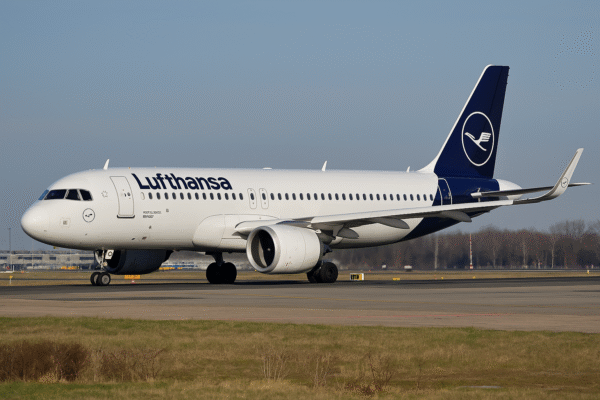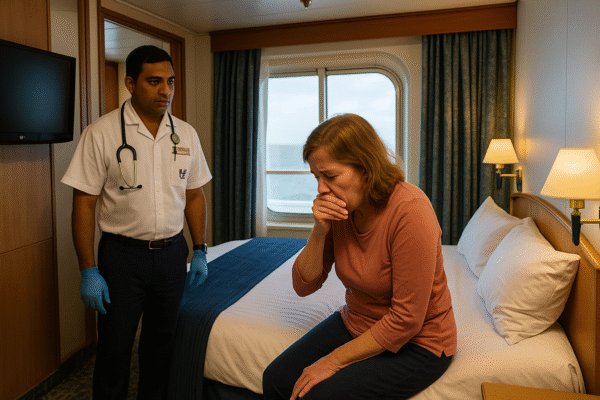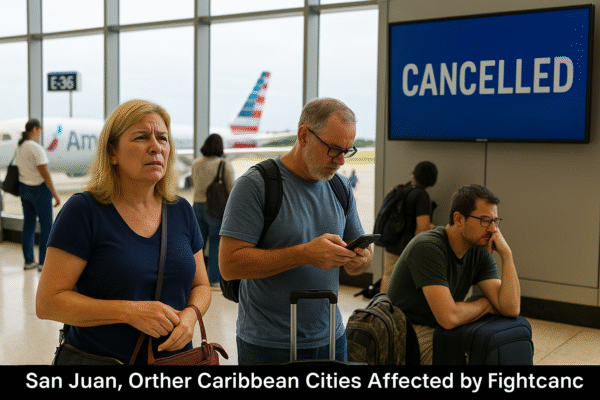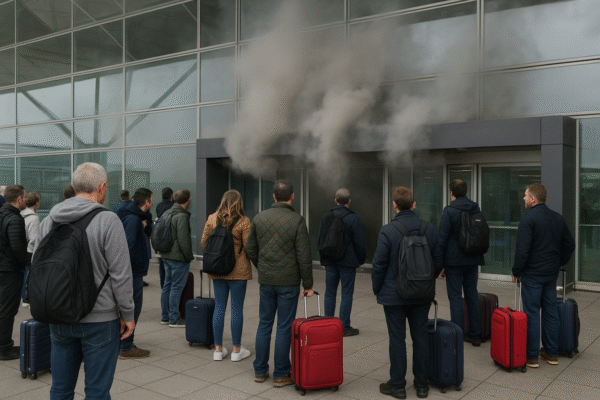In the early hours of September 24, thousands of passengers at London Stansted Airport were left stranded after a fire broke out in the Escape Lounge. The incident triggered the complete shutdown of security operations, bringing one of the UK’s busiest airports to a grinding halt.
The blaze, reported around 3:30 a.m., was quickly contained by the Airport Fire Service, and no injuries were recorded. However, the heavy smoke forced an immediate evacuation of the departure lounge. This evacuation temporarily halted all passenger screening, meaning no one could proceed through security for nearly two hours.
During that critical window, flights continued to operate, but in some extraordinary cases, aircraft departed without a single passenger on board. The event has since been described as one of the most disruptive mornings in Stansted’s recent history.
Widespread Delays and Stranded Passengers
By midday, the scale of the disruption was evident. A total of 82 flights had been delayed, with airlines such as Jet2, Ryanair, and easyJet among the worst affected. Ryanair alone accounted for 45 delayed departures, while Jet2 reported delays across multiple routes.
The most unusual turn of events came when Jet2 was forced to dispatch three empty flights to Greece, bound for Heraklion, Santorini, and Lesbos, after passengers failed to clear security in time. For many travelers, the sight of planes taking off without them underscored the chaos and uncertainty of the day.
While no flights were officially canceled in the immediate aftermath, passengers endured hours of waiting outside the terminal, with many expressing frustration over a lack of clear communication and limited rebooking information.
Impact Beyond the Airport
The disruption extended far beyond Stansted’s terminals. Rail services to and from the airport were also severely affected. A signal failure between Stansted and Bishop’s Stortford led to the cancellation of 10 Stansted Express services linking the airport to London. In addition, CrossCountry trains bound for Cambridge and Birmingham were disrupted, leaving passengers without viable alternatives.
The combined effect of airport delays and rail cancellations amplified the strain on passengers, many of whom were international travelers unfamiliar with local transport options.
Stansted’s Importance to UK Travel
As the UK’s fourth-busiest airport, Stansted handles an average of more than 80,000 passengers daily. It serves as a vital hub for low-cost carriers, particularly Ryanair, which operates the majority of flights from the airport.
The fire’s timing could not have been worse. With tens of thousands scheduled to pass through the airport on September 24 alone, the incident quickly created bottlenecks that rippled throughout the day. Even after security reopened, passengers faced longer-than-usual waiting times, and recovery from the backlog proved slow.
Passenger Rights and Airline Response
Although airlines quickly began rebooking stranded passengers, compensation for delays was limited. Under UK and EU air passenger regulations, airlines are generally not liable for disruptions caused by extraordinary circumstances, such as airport fires.
However, carriers reassured affected travelers that rebooking fees would be waived. Passengers were urged to stay in contact with their airline for the latest updates on new departure times and flight availability.
For those who missed connecting services, the situation remained challenging. Some travelers reported having to rearrange accommodations and make alternative travel plans at their own expense.
Safety First: The Airport’s Handling of the Fire
Despite the frustration caused by the delays, aviation safety experts praised the swift actions of the airport’s fire service. By containing the blaze quickly and ensuring a full evacuation, Stansted avoided what could have been a far more serious incident.
Airport management confirmed that an investigation is underway to determine the exact cause of the fire in the Escape Lounge. While operations have resumed, officials warned that travelers should continue to expect extended security processing and possible knock-on delays in the days following the incident.
Looking Ahead: Travel Advice for Passengers
With Stansted now working to restore normal operations, travelers planning to depart in the coming days are advised to arrive earlier than usual. Airport staff are prioritizing backlog clearance, but high passenger volumes may mean queues remain longer than expected.
For those relying on rail connections, transport authorities have assured that normal service is resuming, but passengers should monitor live updates before setting out.
Airlines have also advised customers to use mobile apps or check their websites for the latest flight status, as real-time updates are being prioritized to reduce confusion.
Broader Implications for UK Travel
This incident highlights the vulnerability of the UK’s travel infrastructure to sudden, unforeseen disruptions. Stansted, as a major hub for affordable European travel, plays a crucial role in maintaining connectivity across the continent. Even a short-lived shutdown can have widespread effects, not only on passengers but also on airlines and connecting airports.
For now, operations continue, but the September 24 fire will likely prompt a review of emergency procedures and resilience planning. Both airlines and passengers will be eager to see lessons learned to ensure smoother handling of any future incidents.
Conclusion
The Stansted Airport fire serves as a stark reminder of how quickly travel plans can be derailed by unexpected events. While the airport has reopened and flights are running, the disruption left thousands stranded and highlighted the challenges of managing emergencies in a high-volume hub.
Passengers are urged to stay alert for updates, plan extra time for security checks, and be prepared for continued delays in the short term. For many, the incident has turned a routine journey into a frustrating ordeal, but safety remained the top priority—a fact that ensured no lives were lost despite the chaos.
For more travel news like this, keep reading Global Travel Wire


















